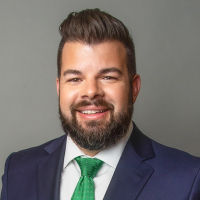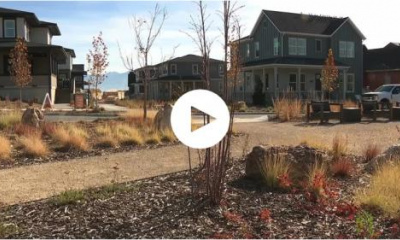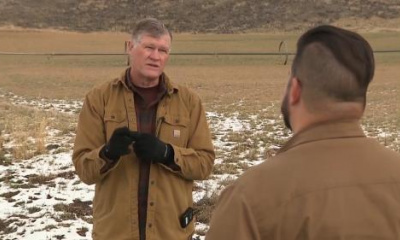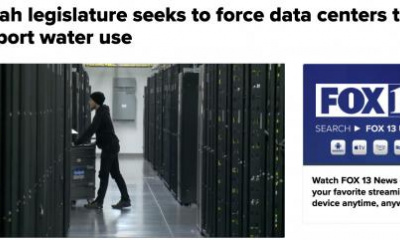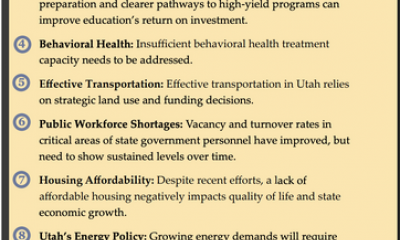SNOWBIRD, Utah — The burner pumped sodium iodide into the air while tubes led back into a trailer.
People would stick their head in the trailer to look at the setup. It was a demonstration of new remote-controlled technologies that will allow the state of Utah to dramatically expand its cloud seeding capabilities.
"We can operate cloud seeding equipment placed anywhere in the United States," said Garrett Cammans, the president of North American Weather Consultants. "We operate on cellular bands or based on satellite link."
Using trailers and shipping containers, Cammans said they can place cloud seeders at higher elevations that people can't easily get to and their mountainous locations can actually result in more snow or rain. Where manually-operated ones are typically in valleys where someone can go and turn them on, these will be controlled remotely with meteorologists measuring weather conditions up to the minute.
"We can place these where they’re actually in the cloud," Cammans said Thursday at a cloud seeding symposium at Snowbird hosted by Utah's Department of Natural Resources where he showed off the new technology.
The state is making big investments in cloud seeding as a way to squeeze a little more water out of a storm and stretch the water supply.
"This is one of the ways we’re looking and taking care of Great Salt Lake," Joel Ferry, Utah DNR Executive Director, told FOX 13 News.
The state only budgeted $200,000 a year for it in the past. This year, the Utah State Legislature spent $12 million to purchase hundreds of new cloud seeders and utilize a pair of airplanes in northern and southern Utah to release sodium iodide when a storm is poised to move over the state. The money will also go toward more research and improvements to existing systems.
"To hear the low cost for added water, only $2 or $3 per acre foot to add so much water. I can see great benefits for our state," said Rep. Gay Lynn Bennion, D-Cottonwood Heights, who serves on the House Natural Resources Committee.
Cloud seeding has been around since the 1940s. Using a propane burner, silver iodide is released into the air when a storm is moving over and it can help get as much as 5% to 15% more precipitation. Utah and surrounding states have begun making bigger investments in it now because of ongoing drought and climate change issues. At Thursday's event, representatives from Idaho, Nevada and California also spoke.
"One of the things that’s very exciting now is the science is advancing," said Dr. Sarah Tessendorf with the National Center for Atmospheric Research in Boulder, Colo. "We have new tools to detect and measure the impacts of cloud seeding. We have the drought and the need for water."
Dr. Tessendorf cautioned that cloud seeding is not "drought busting" technology, but a way to get a little more moisture out of a storm. She answered questions from county commissioners, water managers and state officials about the science. For example, does Utah's cloud seeding ambitions take moisture from neighboring states like Colorado?
"The extra amount from cloud seeding is very small compared to the total amount of water and moisture that’s moving over a given region. At this time, we don’t estimate it to be a big impact, so it shouldn’t be detectable anywhere downwind," Dr. Tessendorf said. "That’s a really good question as we go forward and expand cloud seeding programs that I think warrants further study because it is such a common and understandable concern."
The environmental impacts are also not concerning, she said. That was something Lynn de Freitas, the head of the environmental group Friends of Great Salt Lake was glad to hear.
"The silver iodide that’s used in the process, I'm learning that as far as impacts to environment are fairly insignificant," de Freitas told FOX 13 News on Thursday. "That was something I was concerned about."
When it comes to the Great Salt Lake, Cammans said they have already identified locations at Promontory Point and across the Great Salt Lake Basin that will particularly help get water into the lake. The state plans to roll out the remote controlled cloud seeders by the end of this year and next year across Utah.
But Ferry cautioned that cloud seeding will not solve all of Utah's water issues.
"There’s no silver bullet to Utah’s water problems," he said. "We need to do conservation, we need to do investment infrastructure, we need to do cloud seeding."
Still, some local officials are intrigued. Uintah County Commissioner Brad Horrocks said it could help his area of eastern Utah.
"We’re always short of water out in the Uintah Basin there," he told FOX 13 News. "I'm a farmer besides a county commissioner. Great program, it looks like to me."

